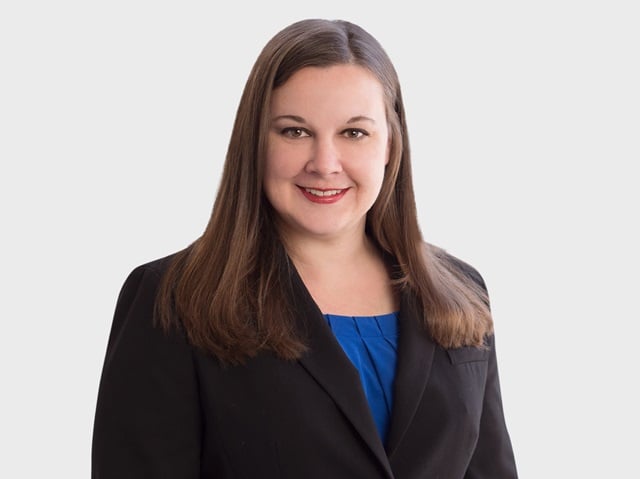Since 2016, participants have filed 19 lawsuits against universities over the fees charged to the universities’ 403(b) plans. In the first of these cases to reach trial, New York University (NYU) secured a complete victory when the court found that NYU did not breach its ERISA fiduciary duty of prudence. The court’s decision provides some important takeaways for plan sponsors and the retirement committees that act as plan fiduciaries.
Background of the Case: NYU’s Retirement Plan Committee (“Committee”) is responsible for overseeing NYU’s two 403(b) retirement plans, which are multi-billion dollar plans. Plaintiffs alleged that the Committee breached its duties under ERISA by imprudently managing the selection and monitoring of recordkeeping vendors, which resulted in excessively high fees charged to participants, and imprudently failing to remove two specific funds from the NYU plans’ investment lineup. The judge conducting the bench trial on these claims scrutinized the Committee’s fiduciary processes, reviewing over 600 documents admitted into evidence related to the steps the Committee took in making decisions concerning the plans.
The court’s written opinion offers plan fiduciaries some food for thought with respect to the fiduciary decision-making process generally.
Fiduciary Decisions Should Be Highly Fact-Based. The opinion highlights the fact-based nature of a retirement committee’s decision-making process, with the court recognizing that plan-related decisions are unique to the institution and body of participants, and should come after reasoned consideration of all the circumstances, not price alone. Fiduciaries Should Understand the Importance of Their Roles. The opinion also emphasized that the Committee and its individual members, as fiduciaries to a multi-billion dollar plan, should understand their roles as fiduciaries and take the role seriously. The court closely reviewed the details of the Committee’s decision-making process and made credibility determinations of all Committee member witnesses who testified at trial. The court observed that some of the Committee members did not meet standards for prudent participation on a committee because they lacked sufficient understanding of their fiduciary obligations and did not understand plan-related issues. However, some Committee members were engaged and knowledgeable. Significantly, even though the court was concerned about some Committee members, the Committee’s overall process as a body was sufficiently prudent.
Fiduciaries Cannot Defer Blindly to an Expert’s Advice. The opinion also emphasizes that fiduciaries cannot defer entirely to or rely passively on the Committee’s investment consultant’s expertise. In order to rely on an expert’s advice, fiduciaries must investigate the expert’s qualifications, provide the expert with complete and accurate information, and make certain that reliance on the advice is reasonably justified under the circumstances. This includes meaningfully probing the investment consultant’s advice and making informed decisions.
In addition to raising some overarching themes about the fiduciary process, the judge’s approach to reviewing the case shined a spotlight on the specific elements of the Committee’s fiduciary process. The opinion identifies several elements that contributed to the court’s finding of overall procedural prudence, including:
- The Committee held meetings on a quarterly basis.
- In advance of Committee meetings (at least one week before each meeting), the investment consultant for the plans prepared and distributed reports on the plans’ investment funds, which included detailed benchmarking information, market analysis, information about the plans’ asset allocations, and other types of investment fund information.
- At least some of the Committee members reviewed the meeting materials in advance, asked questions of the investment advisor in the meetings, asked investment-related questions of the investment advisor outside of Committee meetings, and were actively engaged in the Committee meetings.
- The Committee meeting minutes reflected discussion of fund performance, including discussion of the watch list, at almost all meetings.
- The Committee had in place an investment policy statement (IPS), and the IPS was reviewed at least annually.
- The Committee used requests for proposal (RFPs) periodically/when appropriate with respect to recordkeeping services, and the Committee evaluated responses to RFPs holistically, taking into account not just fees but how a particular recordkeeper’s services could benefit the plans’ participants and how a particular recordkeeper would fit with the plans overall, given plan-specific characteristics and needs (e.g., the substantial portion of plan assets held in annuities).
- When the Committee decided not to follow the investment consultant’s recommendations on a particular item, the Committee documented its consideration of the investment advisor’s recommendations and its rationale for taking a different approach than the one that was recommended by the investment advisor.
As the 403(b) cases and other fee-related lawsuits against plan fiduciaries continue to work their way through the courts, the NYU opinion is a reminder to plan fiduciaries to continue to pay attention to and consider ways to strengthen their fiduciary decision making process.
.svg?rev=a492cc1069df46bdab38f8cb66573f1c&hash=2617C9FE8A7B0BD1C43269B5D5ED9AE2)


